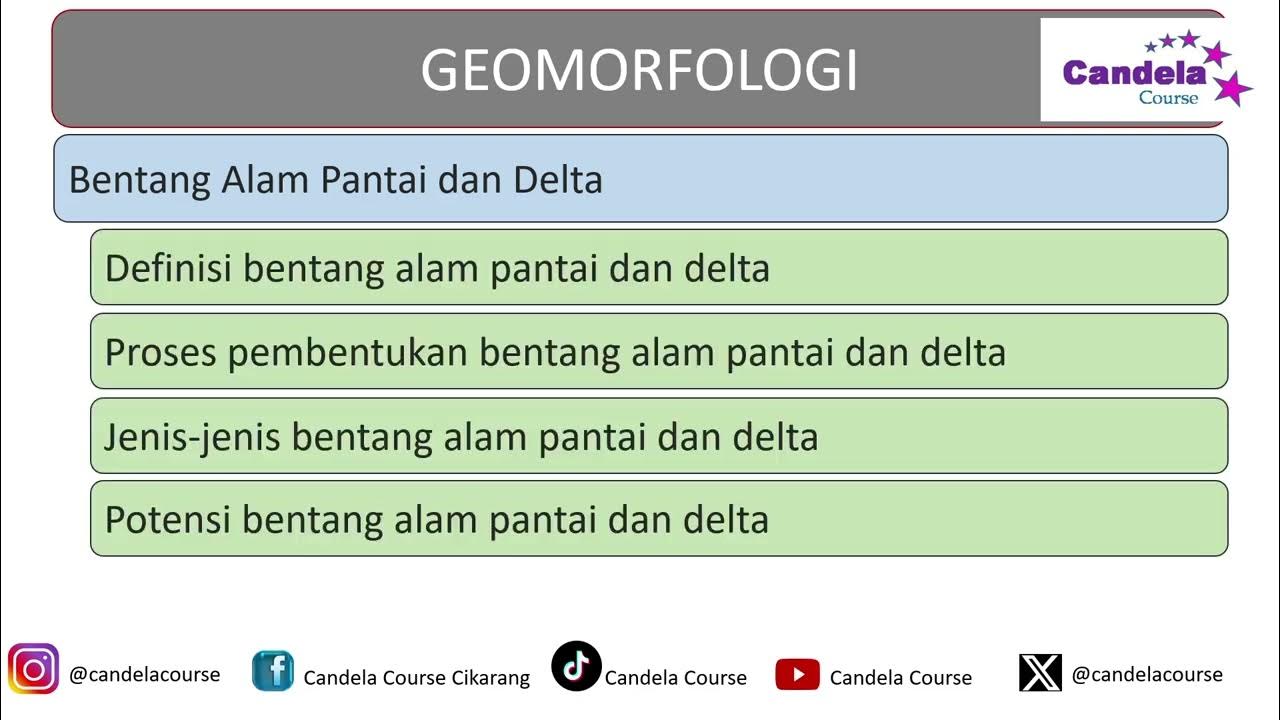Pengamatan Alat di Stasiun Klimatologi ll Teknik Sumberdaya Lahan dan Lingkungan, Polinela
Summary
TLDRThis video provides a detailed guide on agricultural meteorology observations at the Lampung Polytechnic Agricultural Meteorology Station. It covers the proper techniques for measuring rainfall, evaporation, and soil temperature using various instruments like rain gauges, evaporative pans, thermometers, and anemographs. The instructions are clear, emphasizing accurate data collection methods, such as the use of graduated cylinders and micrometers, as well as the proper setup and maintenance of equipment. The video aims to educate viewers on how to perform daily weather observations to monitor agricultural conditions effectively.
Takeaways
- 😀 Observing rainfall is done using a rain gauge with measurements in millimeters, where collected water is poured into a container and the rainfall amount is recorded.
- 😀 When measuring rainfall, the water collected in a container is poured into a graduated cylinder, and the amount is noted accurately. The process is repeated until all water is accounted for.
- 😀 For automatic rain gauges, a new measuring cylinder is installed with the current date and time, ensuring proper calibration and data accuracy.
- 😀 Evaporation measurements are recorded every morning at 7:30 AM using a micrometer to measure the height of water in an evaporation pan.
- 😀 The evaporation data is calculated by subtracting the water level at the start of the day from the end level, and then adding any rainfall measurement recorded.
- 😀 A standard procedure is followed to replace old instruments with new ones, ensuring that correct dates are marked on them and that instruments like thermometers and anemographs are properly calibrated.
- 😀 Actinograph observations involve changing the ink and adjusting the instrument to keep it in proper working condition, ensuring accurate sunlight measurement.
- 😀 Observations on wind speed and direction are carried out with an anemograph. Proper calibration is ensured by replacing the old parts and setting the instrument to the correct time.
- 😀 Temperature readings from various soil depth levels (5-10 cm, 20 cm, 50 cm, 100 cm) are taken three times a day: at 7:30 AM, 1:30 PM, and 5:30 PM.
- 😀 Thermometers are used to measure air and soil temperatures at different times of the day, recording minimum and maximum temperature data, which is then logged for analysis.
Q & A
What is the first step in measuring rainfall using a rain gauge?
-The first step is to take a measuring cup with a unit of millimeters, then open or close the rain gauge to ensure it is ready to collect rain.
How do you record the amount of rainfall after measurement?
-After measuring the water in the collecting vessel, the total rainfall amount is recorded in a notebook. For example, if 10 mm is measured, and an additional 3.5 mm is added, the total rainfall would be 13.5 mm.
What is the process of replacing the old collector in the automatic rain gauge?
-To replace the old collector, remove it from the device, install a new collector, and mark the date, month, and year. Ensure the collector is properly secured and ready for future rain collection.
What is the role of a micrometer in measuring the evaporation pan?
-A micrometer is used to measure the height of the water in the evaporation pan by adjusting it until the needle is at the water's surface. The height is then recorded in millimeters.
How often should the evaporation pan be measured?
-The evaporation pan should be measured every morning at 7:30 AM local time.
What is an anemograph used for in meteorological observations?
-An anemograph is used to record wind speed and direction. The process includes replacing the old collector with a new one, setting the time, and ensuring that the equipment is functioning for accurate data recording.
How is the actinograph maintained during its observation?
-The actinograph is maintained by replacing the old collector with a new one, setting the current date, and ensuring that the device's ink is properly applied to keep the recording accurate. The device is then secured for proper operation.
What measurements are taken with the soil thermometer?
-The soil thermometer is used to measure the temperature at different soil depths: 5-10 cm, 20 cm, and 50-100 cm. These measurements are taken at 7:30 AM, 1:30 PM, and 5:30 PM local time.
What does the mercury thermometer measure in meteorological observations?
-The mercury thermometer measures the temperature of the soil at various depths. The data from the thermometer are recorded and later analyzed.
How is the temperature measured using the wet and dry bulb thermometers?
-The temperature is measured using the wet and dry bulb thermometers by reading the temperature from the dry bulb, wet bulb, and maximum and minimum thermometers. These readings are recorded in the observation notebook for further analysis.
Outlines

هذا القسم متوفر فقط للمشتركين. يرجى الترقية للوصول إلى هذه الميزة.
قم بالترقية الآنMindmap

هذا القسم متوفر فقط للمشتركين. يرجى الترقية للوصول إلى هذه الميزة.
قم بالترقية الآنKeywords

هذا القسم متوفر فقط للمشتركين. يرجى الترقية للوصول إلى هذه الميزة.
قم بالترقية الآنHighlights

هذا القسم متوفر فقط للمشتركين. يرجى الترقية للوصول إلى هذه الميزة.
قم بالترقية الآنTranscripts

هذا القسم متوفر فقط للمشتركين. يرجى الترقية للوصول إلى هذه الميزة.
قم بالترقية الآنتصفح المزيد من مقاطع الفيديو ذات الصلة
5.0 / 5 (0 votes)






